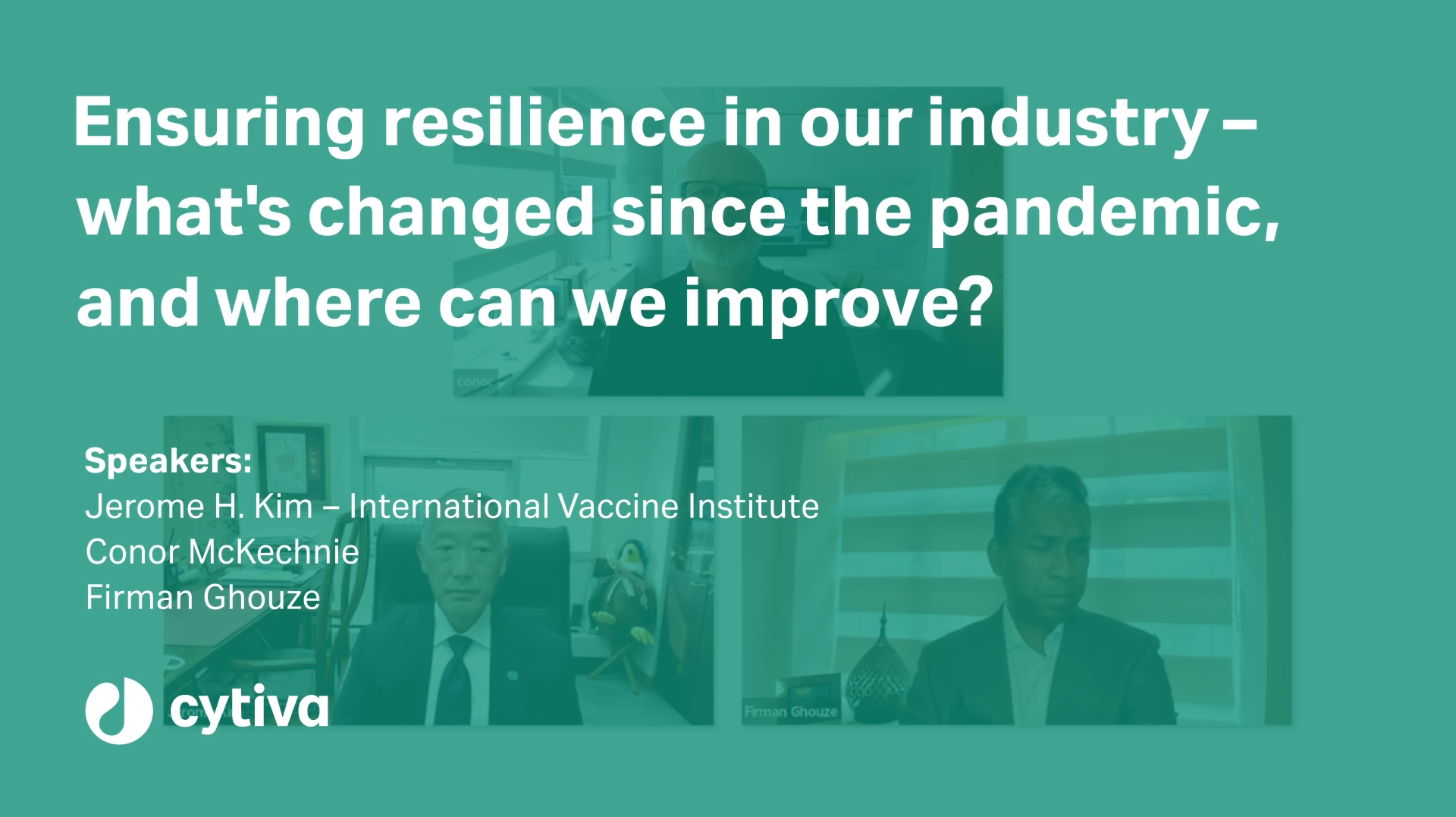
Biomanufacturing has had an interesting couple of years. Unprecedented spikes in demand from the global COVID-19 pandemic have been followed by a period of financial uncertainty, putting the industry under enormous strain.
How are firms responding? Cytiva, a provider of life sciences tools and technology, recently surveyed biopharma leaders to find out where the industry stands on five key pillars: supply chain resilience, talent pool, R&D collaboration, manufacturing agility and government policy and regulation.
Data gathered from 1250 executives across 22 countries revealed that — according to a zero to 10 ranking scale with 10 representing the most positive response — pessimism is pervasive across the sector.
When the survey was first administered in 2021, respondents expressed concerns around supply chains, the R&D ecosystem, talent acquisition, government collaboration and manufacturing agility. While the most recent survey showed some improvements in supply chain resilience and manufacturing agility, many of those original concerns have remained pertinent over the past two years.
A recent webinar hosted by Conor McKechnie, Vice President of Marketing and Strategy at Cytiva, Firman Ghouze, Collaborations Strategy and OpCo NPD Leader at Cytiva, and Dr. Jerome H. Kim, Director General of the International Vaccine Institute, sought to shed some light on the key drivers of these concerns and propose a roadmap for future action.
Key findings from the 2023 Biopharma Resilience Index
The survey’s main finding highlighted a drop in the perceived resilience of the biopharmaceutical industry’s R&D ecosystem, with 2021’s overall score of 6.54 falling to 5.22 in 2023. Despite this recent downturn, most pharma executives expressed a continued commitment to developing more resilient R&D ecosystems, particularly at local sites.
Many countries are also ramping up innovation in hopes of developing new treatments and technology to further advance medicine and support future global health crises. Sweden, for example, has launched an innovation ministry, offering government support to the riskiest phases of research and development. “It’s those risks that researchers in universities and other research institutes can eventually translate into the blockbuster products of the future,” said Dr. Kim.1
Another key finding from the index survey related to supply chain resilience. Although respondents reported a significant increase in their companies’ emphasis on boosting supply chain resilience over the past two years, only 13% of surveyed pharma leaders believed their supply chains had actually become more robust over time. This result shed light on the frailties that remain in global supply chains should they be tested by another pandemic — something governments and businesses must urgently address. As Dr. Kim pointed out, the economic value of the lives lost to COVID-19 amounts to about $137 trillion, which is 98% of an entire year’s worth of global GDP. “When you look at it that way, pandemic preparation costs are actually very small,” he said. “Unfortunately, governments aren’t thinking about the long term.”
Index results for the talent pillar also highlighted the challenges biomanufacturing companies face in preparing for the future. A quarter of surveyed executives expressed exasperation around finding, retaining and training talent in the current competitive job market. Pharmaceutical hubs such as the US, Korea and Singapore have scored notable successes in advancing both human health and economic growth. But current talent challenges represent a barrier in global efforts to drive biomanufacturing forward; collaborating across businesses and sectors can help to fill the knowledge and skill gaps biopharma companies face.
Shaping a brighter future for biopharma
Should biopharmaceutical firms look forward to thriving growth or prepare for the worst? Despite executives’ wariness about overall resilience, agility and innovation continue to drive progress in the biomanufacturing sector. “Novavax had never had an approved vaccine, but we saw the ability of these smaller companies to identify their platform technology and move forward in a determined way, getting vaccines tested and approved in 11 months.” reflected Dr. Kim. “I think that’s remarkable agility.” He added that uncertainty persisted over how many organizations would be able to manufacture billions of doses of vaccines in such a short period of time; action is required to tap the industry’s full potential.
Although biopharma could offer answers to complex health challenges like cancer, autoimmune conditions and infectious diseases, funding for the sector is waning compared to its 2020 peak. GlobalData estimates suggest venture capital funding decreased by 46% for US-headquartered firms between the first quarters of 2021 and 2022. Regional differences in both support and funding are another issue. Inequities in vaccine manufacturing distribution persist, with North America and Europe continuing to produce doses for primarily high-income countries. Other major producers — notably India — play a major role in global vaccine manufacturing while receiving proportionally scant R&D funding in return.2
Indeed, Ghouze honed in on regional disparities as a “tough nut to crack” for biomanufacturers. “One of my observations is that you can predict resilience by gross national income per capita,” he said. “High-income countries did better than low-income countries. My background is in studying malaria and parasitology, and I saw many decades ago the effects of disparities between these two different economic backgrounds. I’d like to see improvement in that respect.” While breakthroughs in gene therapies for illnesses like sickle cell anaemia are gaining traction in low-income countries across Africa and Asia, existing disparities are a sobering reminder for the industry that more work is needed.
To make the most of current opportunities and avoid further challenges, the panel had some key recommendations for biotechnology firms. McKechnie, for instance, emphasised positive outcomes from the pandemic — most notably public communication surrounding the biotechnology industry and vaccination programs. “My recommendation is that we should develop what we saw with respect to education and science communication,” he said. “We can really keep building that momentum so that people understand all about the industry’s impact and the medicines it develops.”
Dr. Kim called for greater leadership in the biomanufacturing world to build on progress and avert future crises. He pointed out that a vaunted “Pandemic Treaty” was yet to materialize, urging the allocation of sufficient resources to ensure the world is uniformly prepared for future diseases. Whether developing novel technologies or deploying them to keep the world healthy, Dr. Kim suggested vigorous leadership would be a prerequisite — a call to action for firms who want to build their resilience but are unsure of how to do it.
In an unstable world, biomanufacturers need to collaborate with teams who understand the landscape and challenges on the horizon. Cytiva possesses the deep knowledge and expertise needed to guide companies working with novel therapies from the research stage to clinical trials and commercialization. Fill in your details to watch the full webinar for more insight.
——————————————————————————————-
1 https://sweden.se/work-business/study-research/research-in-sweden
2 GlobalData Financial Deals Database.



